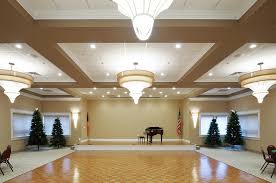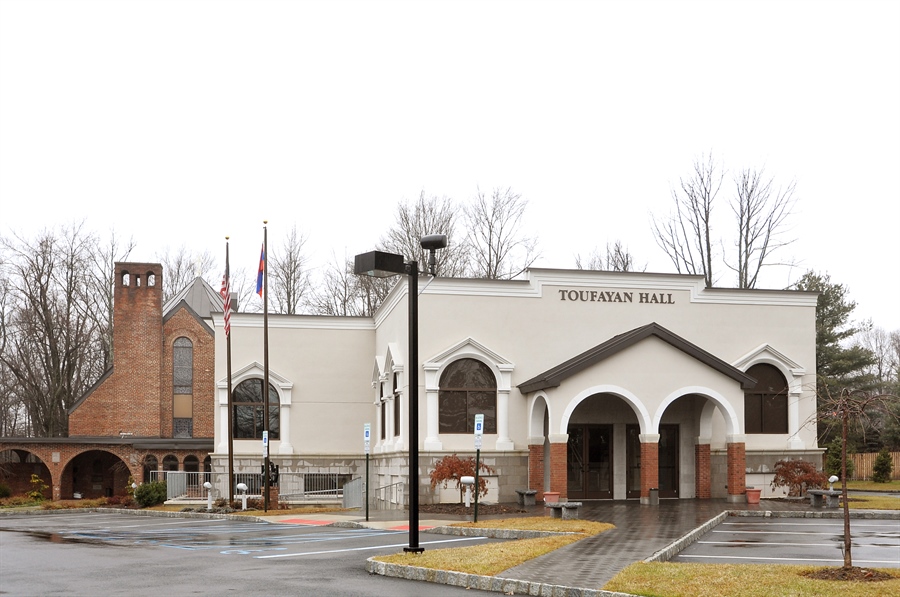HOLY CROWNING
NO MARRIAGE CAN BE SOLEMNIZED OUTSIDE OF THE HOLY SANCTUARY. THE SACRAMENT TAKES PLACE IN THE CHURCH SANCTUARY BETWEEN A MAN AND A WOMAN, BY THE BLESSING OF THE PRIEST.
Both the prospective bridegroom and the bride must have received the Sacraments of Baptism and Chrismation (Confirmation). If there is a question in this regard, the pastor must be consulted. If either party is not a member of the Armenian Apostolic Orthodox Church, proper documentation of their Baptism (Baptism Certificate) must be presented to the pastor by the first meeting.
If either party has been divorced, a dispensation to celebrate the Sacrament must be granted by the Diocesan Bishop of the Armenian Church in accordance with the Canon Law of the Armenian Church. Documentation of the divorce decree (a good photocopy) must be provided to the pastor. The Roman Catholic party should also seek an annulment of their prior marriage if they are to be able to remain in communion with their church.
No ceremony can be celebrated if it is the intention that a second religious service in another church is to be held.
WEDDING DATE
Arrangements for a marriage to be blessed in the church are to be made at least five months in advance.
A date shall be set for the solemnization of the Sacrament of Crowning of Holy Matrimony.
Finalizing the date for the ceremony must be secured in joint consultation with the Pastor.
When all necessary papers are filed, then the chosen date will be confirmed.
Failure to submit the requested documents will forfeit the date chosen.
WHEN WEDDINGS CANNOT TAKE PLACE
By canon law, no marriage may take place after 4:30pm on Saturday afternoons and before 4:30pm on Sunday afternoons.
No marriages may take place at any time during the period of Great Lent (including the first Sunday of Great Lent, Poon Paregentan) and Holy Week, nor on the Feast Days of Easter, Theophany (Armenian Christmas), Transfiguration, Assumption, and Exaltation of the Holy Cross, nor on any Saturday preceding the aforementioned Feast Days and the eight days following Easter through New Sunday (the Sunday following Easter). Also, no weddings may be celebrated on January 13 (The Naming of our Lord Jesus Christ;), February 14 (The Presentation of the Lord to the Temple), April 7 (The Annunciation to the Virgin Mary), and Ascension.
MARRIAGE PREPARATION
After securing the desired date and time of the wedding ceremony, the couple shall set up an initial meeting with the pastor for premarital instruction and preparation.
The proper instruction regarding a Christian marriage is a necessary component of marriage preparations. It is, therefore, expected that the couple will meet with the pastor as often as necessary. During these meetings topics relative to their new life together as Christians and members of the Armenian Church family will be addressed.
DECORATION OF THE SANCTUARY
Requests for adorning the church with flowers, lighting, and other appointments must be approved by the pastor.
No furniture or furnishings of the church may be removed from their respective places.
Flowers may be placed on the altar table, the floor of the bema (upper sanctuary) and in the chancel, with the exception of the steps leading up to the altar.
Fixtures such as podiums and stands are allowed but should be placed so as not to obscure the view of the altar from the congregation. The pastor should be informed of such props.
If flowers are to be taken, the floral arrangements are not to be removed from the altar by any persons other than those designated by the pastor.
No decorations shall be nailed or screwed to the furnishings nor attached in any way that would damage the church furniture.
The wedding runner/white carpet can be acquired from the florist.
Decorations which do not comply with the above will be removed prior to the service.
PHOTOGRAPHY AND SOUND RECORDING
Photography and sound recording are allowed within limitations. Still photographers and videographers should exercise caution and maintain decorum during the actual celebration of the sacramental rite. Most importantly, caution should be used by the photographer not to blind the eyes of the Priest, Deacon or any other participant. At no time and nor for any reason the photographer can stand on the steps of the Altar or be at the Altar itself.
ADDITIONAL MUSIC
All requests for additional music before the ceremony must be approved by the pastor in advance. If there is a desire to enhance the pre-wedding preludes with individual performers or instrumental groups, the pastor must be appraised, after which he will determine the approval.
USHERING
Ushering and any necessary control of traffic shall be arranged by the bride and groom.
CLERGY/GUEST CLERGY
The pastor will officially invite guest clergy participants by letter.
If the guest priest is a member of the Armenian Church, he may be invited to perform the service.
If a priest of a different religious tradition to be invited, the Pastor will assign to him those portions he sees fit according to the Canons and traditions of the Armenian Church; and it should be clear that any priest of a different denomination is an invited guest and not a co-celebrant.
If the clergy are to be invited to the reception, an invitation should be sent to them.
It is the responsibility of the bride and groom to provide an invitation to the wedding reception and directions as well as any necessary travel and lodging expenses for the guest clergy assisting the celebrant.
The wedding ceremony consists of the following actions
The Blessing of Rings
The ring has been a symbol of faithfulness from the earliest of biblical times, both of God to man and of man to his bond of marriage. The circle is the shape symbolizing eternity. It represents the love and faithfulness of bridegroom and bride to each other. Often, the Blessing of the Rings takes place during the Engagement celebration of the couple to be wed.
The Joining of the Right Hands
The Priest joins the right hand of the bride to the right hand of the bridegroom, recalling the oneness of Adam and Eve. He places his hand over theirs symbolizing the sanctifying blessing of their union.
The Vows
The bridegroom and bride are asked to respond three times to the inquiry of the priest. They each state their willingness to assume their proper roles as husband and wife in the context of St. Paul’s Letter to the Ephesians.
The Reading from Holy Scripture
The Scripture readings include the most revealing sections of the New Testament relative to marriage. The important point made by St. Paul in the Epistle to the Ephesians is that of the union of Christ with the Church, His Body, as the model of the relationship between husband and wife. Following the Epistle is the Gospel reading from St. Matthew (19:3-9) that speaks of a man joining together with his wife and the two shall become one, giving further elucidation on the bond of union that is to exist.
The Crowning
The weddings chaplets placed upon the bridegroom and the bride are of Biblical origin. The crowns are the sign of the glory and honor with which God crowns the bride and the groom during the Sacrament. They are crowned as the king and queen of their own kingdom, the home.
The Common Cup
Wine is a gift of God to man. By presenting the blessed wine to the couple, the Church wishes that their life be full of happiness. The drinking of wine from the common cup serves to impress upon the couple that from that moment on they will share in the joys and difficulties of life together.
The Final Blessing
After the singing of the “Lord’s Prayer”, the newly married couple receives the blessing of the Church, sending them into the world to now live as husband and wife, king and queen of their kingdom and family.
CHURCH HALL
Toufayan Hall is an ideal place for your wedding reception. The hall offers an unbeatable location for your guests travelling to Livingston, New Jersey. Centrally located, Toufayan Hall is 24 miles from New York City and conveniently located near Routes, 24, 78, 280, 287 & 10.
Details
2,492 square feet of ballroom space (576 sq. ft. dance floor)
900 sq. ft. of total meeting space (lower level)
150 guests, theater style
125 guests for a sit down dinner
Stage with Grand Piano
Elevator, handicapped accessible, ADA compliant with handicap bathrooms
Parking for 80 cars(valet service for 100)
Speaker system in the hall for meetings along with a pull down screen hidden in the ceiling




“Toufayan Hall is the ideal venue for all types of occasions.”
